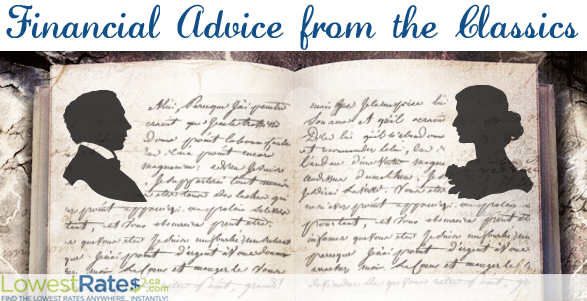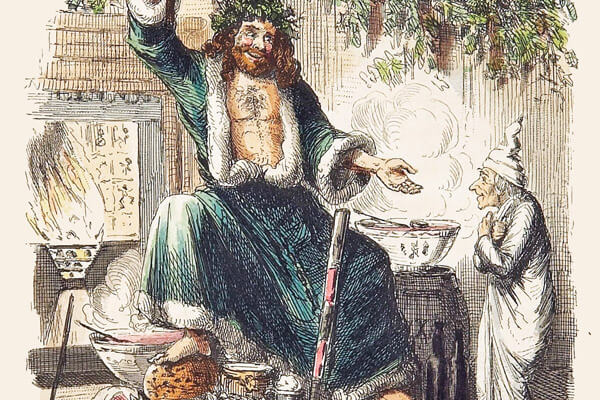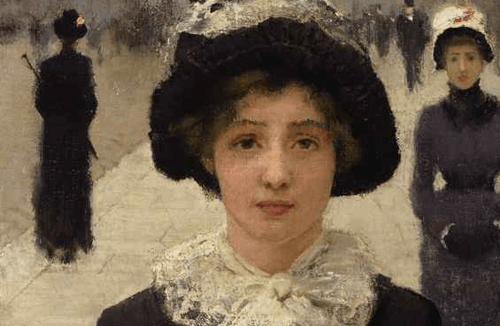Having Trouble with Your Finances? Try Turning to the Classics
By: Lucy Zemljic on August 8, 2014
In June, we took a look at seven of the top personal finance books on the market, gleaning wisdom from the best financial advisors out there. Since then, I haven’t been able to shake the feeling that there’s more to be learned from the printed word – but this time, in the fiction aisle.
When it comes to fact vs. fiction, I’m more than a little biased. (What English-degree-carrying kid isn’t?) And while those financial how-to books are gems in their own right, I’m convinced that there’s more money advice to be found within the pages of paperbacks. This time though, the advice is disguised as prose, and those nuggets of wisdom are buried in plot.
That’s why I’d like to take you on a journey to a world you may not have visited since Classic Lit 101 – let’s dive into the literary canon and soak up these four money lessons learned from classic literature.
1. A Christmas Carol helps us let go of our “money scripts”
Ah, the classic Dickens. This novel’s miserly protagonist is so well-known that he’s made his way into pop culture. Even if you haven’t read the book, watched the play or seen the many movie adaptations, you’ve probably heard his famous name before – it’s literally in the dictionary under “cheapskate.”
But what can crotchety old Ebenezer Scrooge teach the modern day reader about money? So much, it turns out, that it could fill a book – that’s exactly what Ted and Brad Klontz did.
In The Financial Wisdom of Ebenezer Scrooge, this father-son financial psychologist duo explain that the three ghosts of the story act as “three therapists.” By allowing Scrooge to glimpse into his past, present and future, they help him realize the error of his penny-pinching ways.
Ted and Brad Klontz argue that many of us carry around “unconscious money scripts” – essentially, deeply ingrained values about money that can actually be detrimental. Take a child, for instance, who grows up in poverty and learns to save every penny. When she prospers as an adult, she simply can’t shake the notion that she has to save every penny, even when her situation has changed.
According to Klontz, Scrooge’s journey across time prompts the reader to identify and change their own “money scripts,” so that they can reach their goals unfettered by damaging money-habits.

2. The Great Gatsby teaches us that money really can’t buy me love
“Her voice is full of money,” says Gatsby of his star-crossed love, Daisy. It’s an almost perfect embodiment of what this classic American novel is all about – money and what it does to people, as epitomized by the tragic downfall of the novel’s namesake.
Gatsby wasn’t able to woo Daisy with his huge mansion, lavish lifestyle or extravagant parties. What’s more, by the end of the story we realize that none of those hundreds and hundreds of party-goers ever actually cared about their mysterious host.
The financial lesson learned from this iconic work of 1920s fiction might be plain as day – money can’t buy love or friendship. But the way that Fitzgerald unravels this lesson? Well, you won’t find that kind of storytelling in any personal finance book.

3. Anna Karenina shows us what things are really worth
A tragic novel about adultery? Yes, it’s definitely about adultery. But there’s also an often-overlooked piece of financial advice in this epic work of Russian literature, and it reads like it could have come straight from Suze Orman herself.
The financial lesson starts when Stepan Oblonsky, a Moscow nobleman and sister to Anna Karenina, asks his friend Konstantin Levin if a financial transaction he’d just made was actually worth it. Oblonsky just sold a piece of wooded land and asks Levin if he got a good deal out of it.
“But you are so certain you understand this whole business of selling the wood. It’s hard. Did you count the trees?” asks Levin.
“How can I count the trees?” laughs Oblonsky, dismissing the idea.
“Your wood is worth two hundred roubles an acre outright, and he’s giving you seventy-five in installments,” explains the money-savvy Levin, “you’ve made him a gift of thirty thousand.”
It turns out that Oblonsky committed a financial mistake that’s all too common among consumers – he sold something for less than he deserved, because he didn’t take the time to figure out how much it was actually worth. The lesson here is simple, but as important as any other – don’t sell (or buy) anything before you know how much it’s actually worth.

4. The Merchant of Venice shows us the perils of debt
It just wouldn’t be right to finish this list without The Bard – especially when he penned a little play called The Merchant of Venice. It’s pretty much mandatory that Shakespeare shows up here to teach modern-day readers a thing or two about finances.
The Merchant of Venice illustrates – quite dramatically – the ramifications of debt, and what happens when you don’t pay back the money you owe. It turns out that debt is such a prevalent theme in literature that Canadian literary legend Margaret Atwood penned an entire book about it. In Payback: Debt and the Shadow Side of Wealth, Atwood argues that this classic Shakespeare play “has all those props we’ve come to recognize as integral to debtor/creditor balances.”
Antonio, the title’s merchant, wants to lend money to his friend Bassanio, who needs the money to woo Portia, the (very rich) object of his affections. The problem? Antonio doesn’t have the cash to lend, so he stands security for a loan from the moneylender Shylock. When the loan isn’t repaid in time, Shylock doesn’t want a money guarantee – he wants a “pound of flesh,” Antonio’s flesh.
As you can imagine, this doesn’t paint a pretty picture of the consequences of falling into debt. In fact, this four-hundred-year-old cautionary tale is still as relevant now as it was in 1605 – and for Canadians, perhaps now it’s more relevant than ever. This past winter, Canadian household debt hit an all-time high, and although those worrisome numbers are edging down – ever so slightly – household debt is still one of the biggest concerns of housing market experts across the country.
Although modern-day readers won’t be forced to pay back their financial woes in as gruesome a fashion as poor Antonio, they may very well end up paying an arm and a leg in interest. If this tale doesn’t serve up some clear-as-day financial advice, I’m not sure what will.


